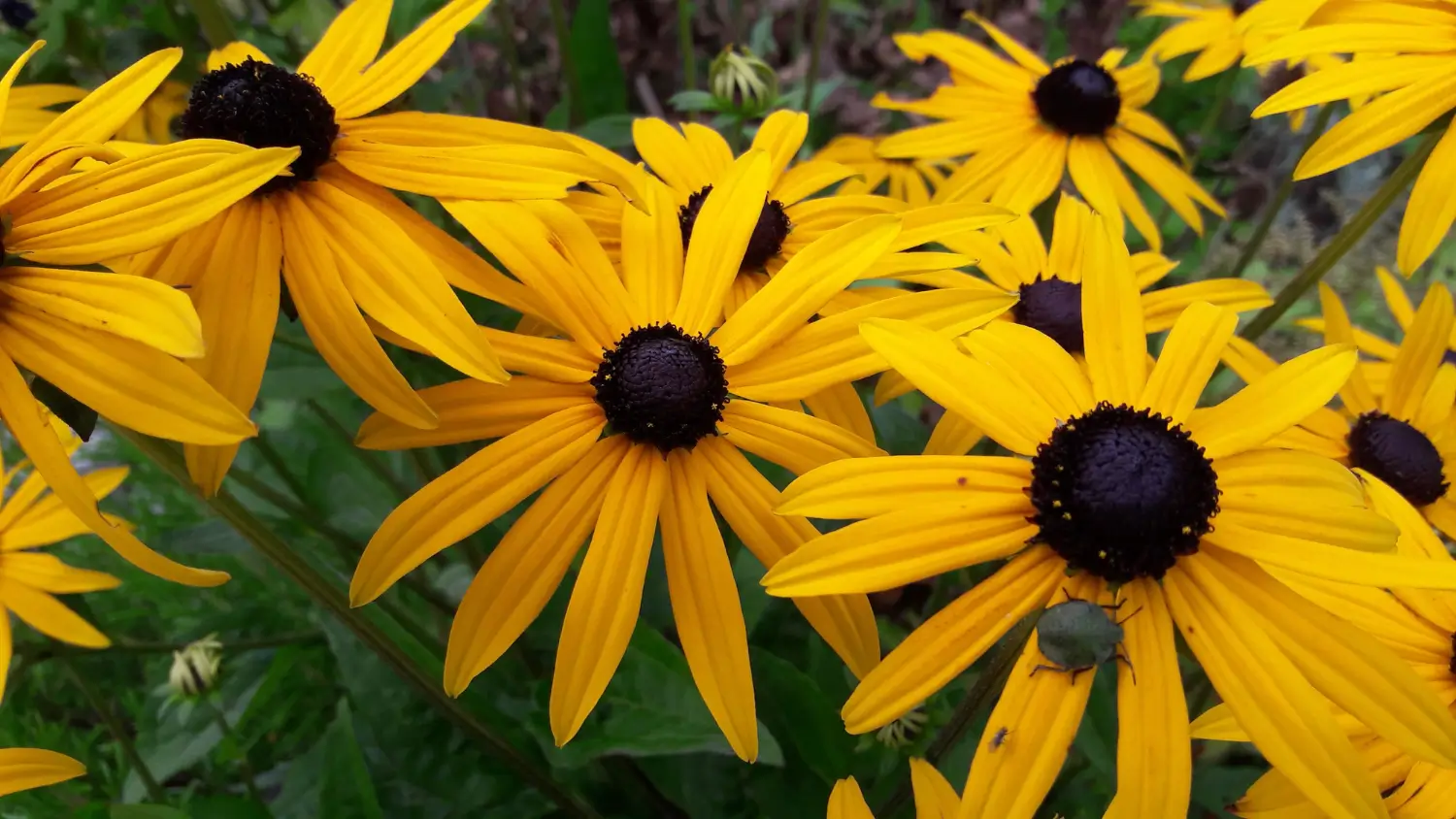
August 24, 2025

A garden filled with bright yellow flowers swaying in the breeze creates a beautiful and lively scene. Black-Eyed Susans stand out among these flowers with their golden petals and dark centers. Bees and butterflies visit them often, adding even more life to the garden.
Black-Eyed Susans are strong and adaptable. They grow well in different soil types, need little care, and can survive dry conditions once they are established. They can be planted in garden borders, wildflower meadows, or even in pots. Their bright blooms bring warmth and energy to any outdoor space.
Growcycle is a premier B2B marketplace connecting thousands of growers and manufacturers worldwide. It offers various products, such as seeds, soil amendments, and gardening tools, that can help cultivate black-eyed susans.
The Black-Eyed Susan is a wildflower native to North America. It has grown in meadows, prairies, and open fields for centuries. Early settlers and Native American tribes admired this bright yellow flower due to its beauty and usefulness.
The plant gets its name from its dark brown or black center, which looks like an eye. The name "Susan" likely comes from an old English poem, though its exact origin is unclear. It became popular in gardens because it easily grows and spreads quickly.
In 1918, it was named the state flower of Maryland and is often seen in wildflower mixes across the United States. It remains a favorite among gardeners for its long-lasting blooms and ability to attract pollinators like bees and butterflies.
Black-Eyed Susan (Rudbeckia hirta) is a hardy, flowering plant known for its bright yellow petals and dark brown or black center. It belongs to the Asteraceae family, which is the same group as sunflowers and daisies.
Several species and cultivars of Black-Eyed Susan (Rudbeckia) are grown as perennials, such as:
| Species/Cultivar | Height | Flower Size | Bloom Time | Description |
|---|---|---|---|---|
| Rudbeckia fulgida (Orange Coneflower) | 2–3 feet (60–90 cm) | 2–3 inches (5–7.5 cm) | Mid-summer to early fall | Bright yellow petals with a dark brown center. Spreads through rhizomes and forms dense patches. |
| Rudbeckia nitida (Shiny Coneflower) | 3–6 feet (90–180 cm) | 3–4 inches (7.5–10 cm) | Late summer to early fall | Drooping yellow petals with greenish-yellow cones. Prefers moist soil and is great for rain gardens. |
| Rudbeckia laciniata (Cutleaf Coneflower) | 3–10 feet (90–300 cm) | 2–4 inches (5–10 cm) | Midsummer to early fall | Tall with cut, lobed leaves and yellow flowers with drooping petals. Spreads easily. |
| Rudbeckia maxima (Giant Coneflower) | 4–7 feet (120–210 cm) | 3–5 inches (7.5–12.5 cm) | Early summer to fall | Tall with large, blue-green leaves and yellow flowers with dark centers. Thrives in moist soil. |
| Rudbeckia subtomentosa (Sweet Coneflower) | 3–5 feet (90–150 cm) | 2–3 inches (5–7.5 cm) | Late summer to early fall | Yellow flowers with a dark center and sweet fragrance. Soft, fuzzy leaves. |
Black-Eyed Susans (Rudbeckia hirta) are easy to grow but need the right conditions to help them thrive and bloom beautifully.
Black-Eyed Susans grow best in well-drained, loamy soil. This means the soil should not be too wet or too dry and should be rich in nutrients. They prefer soil with a pH level between 6.0 and 7.5 (slightly acidic to neutral). If the soil is too acidic or alkaline, it can be improved by adding compost or other organic materials to balance the pH.
Black-Eyed Susans need full sun to grow well. They need at least 6 hours of direct sunlight each day. Without enough sun, the plants may grow weak and not produce many flowers.
Black-Eyed Susans are drought-tolerant and can survive without frequent watering after the first year. However, they should be watered regularly when they are young to help them grow strong roots. The soil should be kept moist but not soaked, as too much water can cause the roots to rot.
These plants are native to North America and can grow in many different climates. They are hardy in USDA zones 3 to 9, which means they can handle cold winters in the north and warmer temperatures in the south. In cold areas, they die in winter and grow again in the spring.
When choosing a place to plant Black-Eyed Susans, it is important to find one with full sun for most of the day. These plants do well in garden borders, wildflower meadows, and naturalized areas. Because they spread out, planting them in groups or clusters is best for a bold look. They should not be planted in areas with poor drainage or too much shade, as this can prevent them from growing and flowering well.
Black-Eyed Susans are easy to grow from seeds, transplants, or by dividing mature plants. The right planting and propagation methods ensure healthy growth and a beautiful flower display year after year.
Growing Black-Eyed Susans from seeds is a simple and cost-effective method. Here is how to do it:
Black-Eyed Susans started from seeds may not bloom in the first year but will establish strong roots for flowering in the following seasons.
For faster blooms, transplanting seedlings is also a great option. Here is a step-by-step guide to do it:
Dividing Black-Eyed Susans every 3–4 years can help rejuvenate older plants, improve flowering, and create new plants for other areas.
Black-Eyed Susans are low-maintenance plants, but regular care helps them grow strong and bloom for a longer period. Proper fertilizing, pruning, and pest control will keep them looking their best year after year.
Black-Eyed Susans can play an important role in supporting the environment. Their bright blooms attract pollinators, promote biodiversity, and contribute to a balanced ecosystem, making them an excellent choice for eco-friendly gardening.
Black-Eyed Susans are a favorite among pollinators due to their vibrant yellow petals and dark centers, which act as landing targets for insects. Their daisy-like shape and open structure make it easy for bees, butterflies, and other beneficial insects to access nectar and pollen.
Black-Eyed Susans contribute to garden biodiversity by creating a habitat for various creatures. They provide food and shelter for many insects and small animals.
Black-Eyed Susans are an eco-friendly choice due to their resilience and low maintenance needs.
Why is it called Black-Eyed Susan?
The name comes from its dark brown or black center, which looks like an "eye" in the middle of its bright yellow petals.
Where is the best place to plant Black-Eyed Susans?
They thrive in full sun with well-drained soil and are best suited for garden borders, wildflower meadows, and containers.
Do black-eyed Susans grow from seed?
Yes, Black-Eyed Susans grow easily from seeds. They can be sown directly in the garden in spring or fall.
Black-Eyed Susans are bright and cheerful flowers that make any garden look lively. They grow easily in different climates and soil types, making them a good choice for both new and experienced gardeners. These flowers can be planted in garden borders, wildflower meadows, or pots, adding beauty to outdoor spaces with little effort.
Besides looking attractive, these plants can help nature by bringing in bees, butterflies, and birds. They are strong plants that can survive dry conditions, making them a great option for eco-friendly gardening. They will keep blooming year after year with basic care like watering, trimming, and occasional feeding.
Platforms like Growcycle offer helpful gardening products, such as seeds, soil boosters, and tools, for those who want to grow Black-Eyed Susans. With the right supplies and care, these colorful flowers can brighten any space while also supporting nature.
Disclaimer: This material is for informational purposes only and should not be relied on for legal, medical, financial, or any other form of professional advice.